Coniston Village
Coniston Village sits at the northern end of Coniston Water in England’s Lake District. It is a village steeped in history and surrounded by striking natural landscapes. Dominated by the towering presence of the Old Man of Coniston, the area attracts walkers, climbers, and history enthusiasts alike. Its legacy of mining, literary connections, and associations with key figures like John Ruskin and Donald Campbell make it a fascinating destination.

The Old Man of Coniston
The Old Man of Coniston, rising to 2,634 feet, forms a dramatic backdrop to Coniston village and is one of the Lake District’s most popular hiking destinations. The mountain, with its well-trodden paths and panoramic views, has long attracted climbers and walkers. Nearby, the Tilberthwaite slate quarries, a reminder of Coniston’s industrial heritage, provide a further area of exploration for those interested in the region’s mining history.
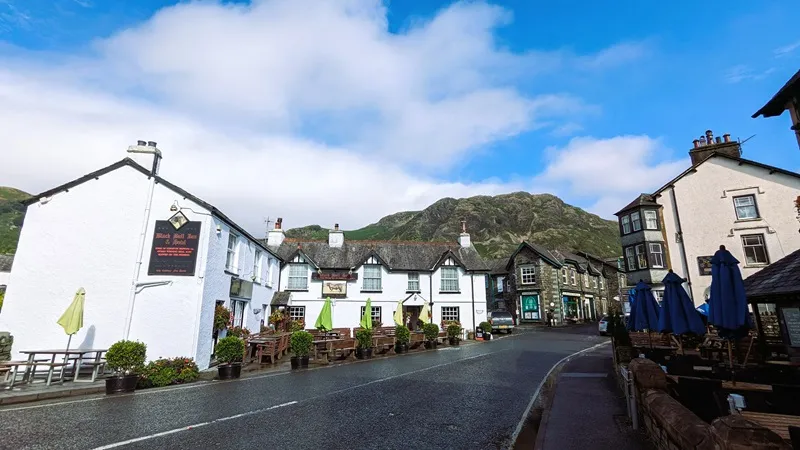
Coniston Village: Historical Roots
Coniston village was once a scattered rural community, primarily settled around Coniston Hall. A 16th-century farmhouse with distinctive chimneys, it was built by the Fleming family. Today, Coniston Hall is owned by the National Trust, though it is not open to the public. The village’s development gained momentum in the mid-19th century, when copper mines dating back to the Jacobean era were revitalised in 1859.
Copper mining near Coniston village
Copper mining at Coniston in the Lake District dates back to the late 16th century, when the Company of Mines Royal began extracting ore with the help of skilled German miners. Operations expanded significantly in the 18th century under the Macclesfield Copper Company, which constructed smelters and mined the Bonsor Vein to a depth of 300 feet. The 19th century marked the peak of production, with over 3,600 tons of ore mined in 1856. However, competition from cheaper imported copper led to the industry’s decline, and mining ceased in 1897. Today, the remnants of this once-thriving industry are preserved as historical landmarks.
The Legacy of John Ruskin
In 1872, the art critic, writer, and social reformer John Ruskin settled at Brantwood, a house across the lake from Coniston. Ruskin lived there for the final 30 years of his life, finding inspiration in the surrounding landscapes. When Ruskin died in 1900, he was buried in St. Andrew’s Church graveyard. His grave is marked by a carved cross made from green slate from Tilberthwaite Quarry, designed by his friend and secretary, W.G. Collingwood. The cross incorporates symbols representing key aspects of Ruskin’s life and work.
A year after Ruskin’s death, Collingwood helped establish an exhibition to preserve Ruskin’s mementos, which became the Ruskin Museum. The museum, still located behind the Coniston Mechanics Institute, remains a centre of Ruskin’s legacy and provides insights into the village’s broader history.
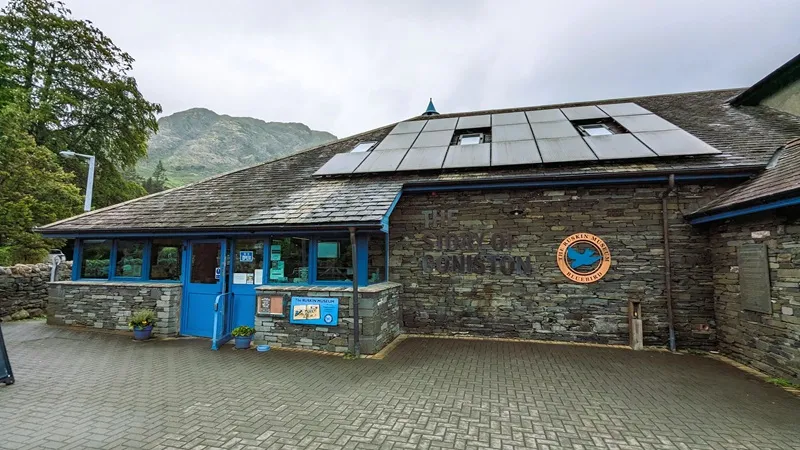
Connections to Literature and Nature
Arthur Ransome’s classic children’s book, Swallows and Amazons, was inspired by the area surrounding Coniston Water. Locations such as Peel Island and Wild Cat Island served as settings for the adventures of the Walker and Blackett families. The Monk Coniston estate, which stretches from the village to Skelwith Bridge, is another area of literary and natural significance. Beatrix Potter owned the estate and bequeathed it to the National Trust, along with Tarn Hows, a nearby beauty spot that attracts thousands of visitors annually.
Donald Campbell and Bluebird in Coniston Village
Coniston’s association with speed records is immortalised by the achievements of Donald Campbell, who broke seven world water speed records, four of them on Coniston Water. In 1955, Campbell achieved the record of 202.32 mph on the lake. However, his life ended tragically in 1967 when he died attempting to reclaim the record.
Campbell’s jet-powered hydroplane, Bluebird K7, was recovered from the bed of Coniston Water in 2001 and has since undergone restoration. A memorial to Campbell stands on the village green, opposite the main car park. The original Bluebird is now in Coniston village, where it is displayed in a dedicated wing of the Ruskin Museum.
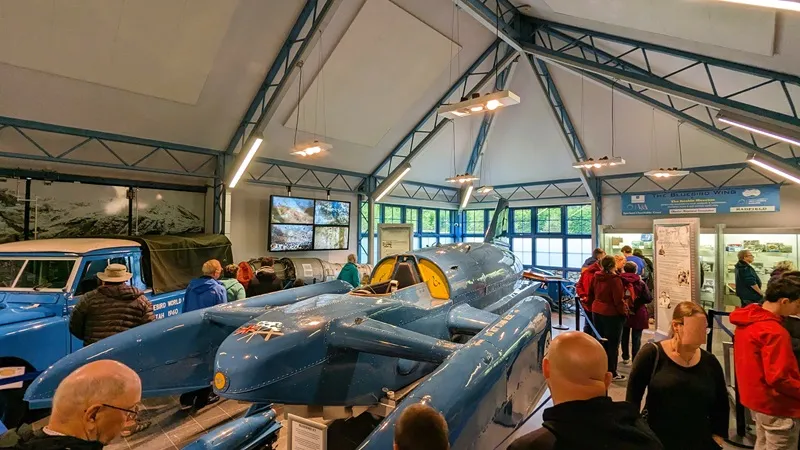
Coniston Brewing Company and the Black Bull
The Black Bull Inn, a 400-year-old coaching inn at the foot of the Old Man of Coniston, houses the Coniston Brewing Company. Famous for its Bluebird Bitter, which won CAMRA’s Supreme Champion Beer of Britain award in 1998, the brewery continues to draw both locals and visitors. The inn is a popular stop for those exploring the village and its surroundings.

Coniston Village to Coniston Water
Coniston Water, the third-largest lake in the Lake District, offers two public launch services: the Coniston Launch and the National Trust’s Steam Yacht Gondola. Both services provide scenic journeys around the lake, with stops at key locations including Brantwood. These launches allow visitors to experience the beauty of the lake while connecting with its historical and cultural landmarks.
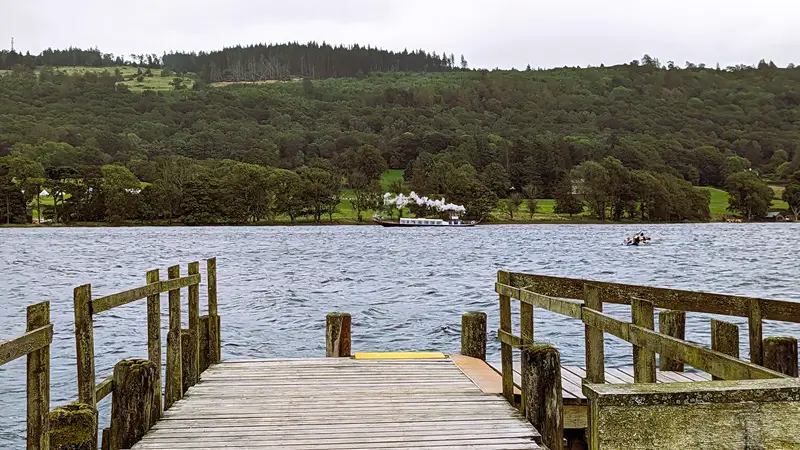
For visitors spending time by the lake, feeding the ducks, geese, and swans is a popular activity, especially for families. A nearby lakeside café offers drinks and light meals, providing a convenient spot to relax and enjoy views of Coniston Water.
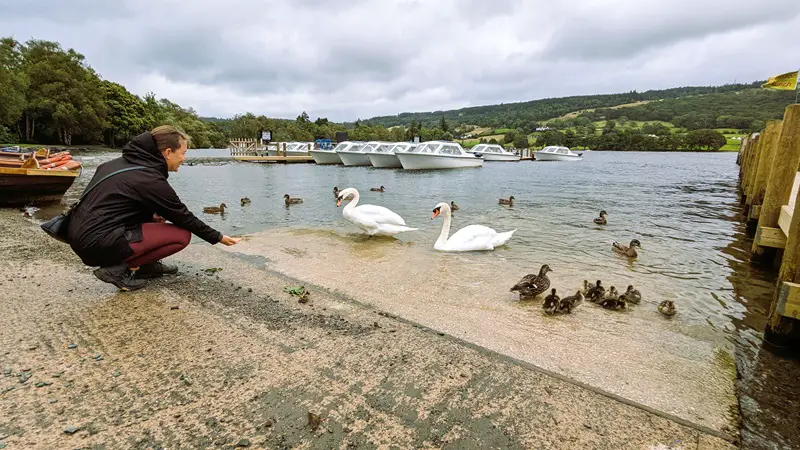
Walking in the Coniston Fells
See our new guide for Walking the Southern Fells >>
[nggallery id=236]
Other pages of interest:
- Coniston Water
- Coniston Launch
- Steam Yacht Gondola
- Lake District National Park
- John Ruskin
- Brantwood
- Ruskin Museum
- South Lakes Area Menu
- Towns and Villages
Accommodation Links:
- The Coppermines Lakes Cottages – Holiday Cottage Agency based in Coniston village
Grid Ref : SD 303975
Planning a visit to Coniston Village? See the location marker below and enter your dates to see available accommodation on a handy map
